This content was originally published by the Longmont Observer and is licensed under a Creative Commons license.
Written by Al Pace: As business manager and later the editor of one of Longmont’s first newspapers, Charles William Boynton’s place in Longmont’s early history would have been assured.
In addition to that accomplishment, he and Rev. Dr. C. E. Longren helped to fund the construction of Longmont’s public library by securing $10,000, donated by Andrew Carnegie.
As an amateur photographer, he also made a major contribution to the visual images we have of early Longmont.
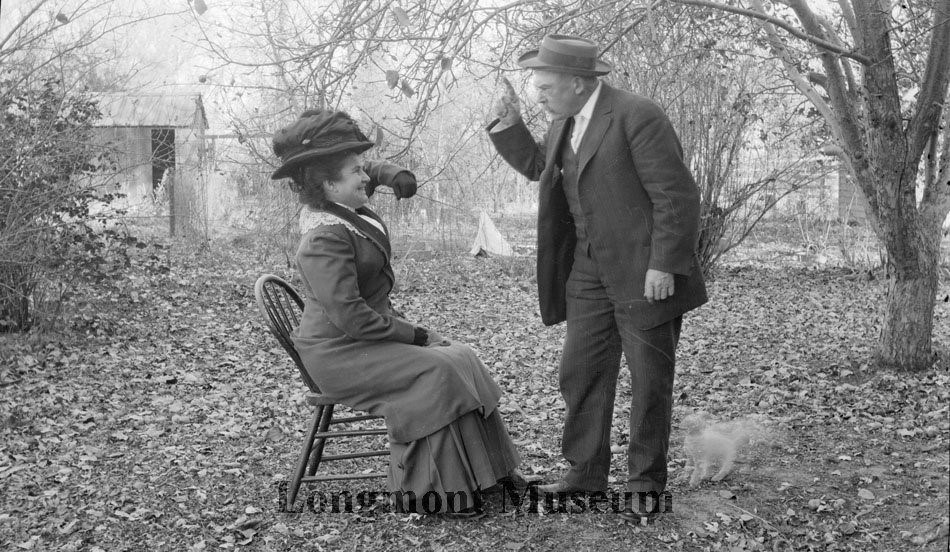
A sense of humor must have been a great asset to a newspaperman. In this 1910 photo titled “Mr. and Mrs. CWB at home,” Boynton pretends to scold his wife, Minnie Irwin Boynton, as she pretends to shield herself.
The couple were married July 14, 1880, and settled into their home on 520 Emery Street in Longmont where they raised two daughters, Louise and Emily, and a son, Harry, who died at age 15. Mrs. Boynton also gave birth to five other children, whom died before their first birthday.
The Longmont Ledger was not our city’s first newspaper. The Longmont Press preceded it in 1871, but that newspaper perished in a fire on September 12, 1879, which destroyed all the buildings on the east side of Main Street between Third and Fourth avenues except those on the corners.
Realizing that Longmont needed a newspaper, a group of three citizens founded the Ledger Publishing Company in that same month. Foremost among them was the Longmont Ledger’s first editor, Henry Laurens Hayward. One year later, Boynton bought an interest in the paper and became its business manager. It didn’t hurt that Boynton was already an experienced printer.
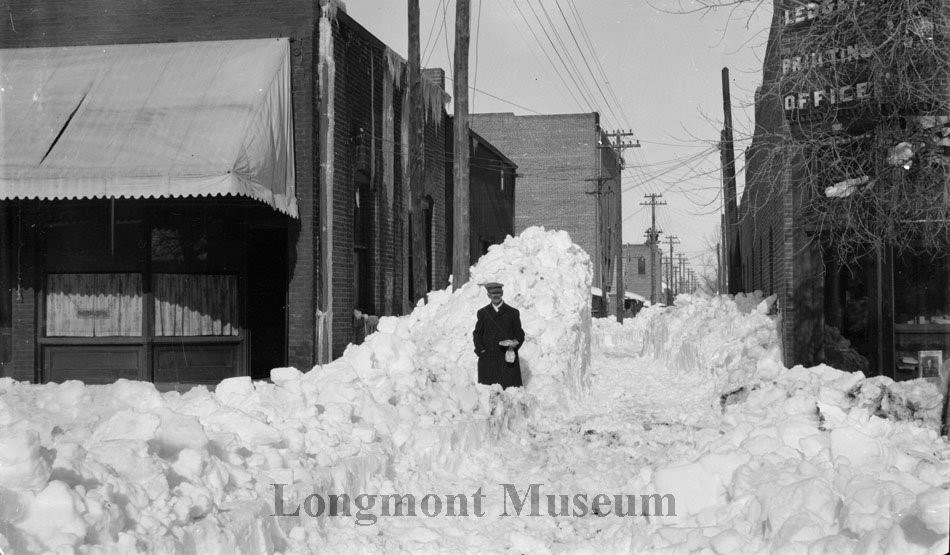
Several of Boynton’s photographs depict the record snowfall that Longmont received early in December 1913. The one above shows a man, whom is not identified, standing in an alley next to the Ledger Printing Office (note the sign atop the building to the right) located at 518 4th Avenue.
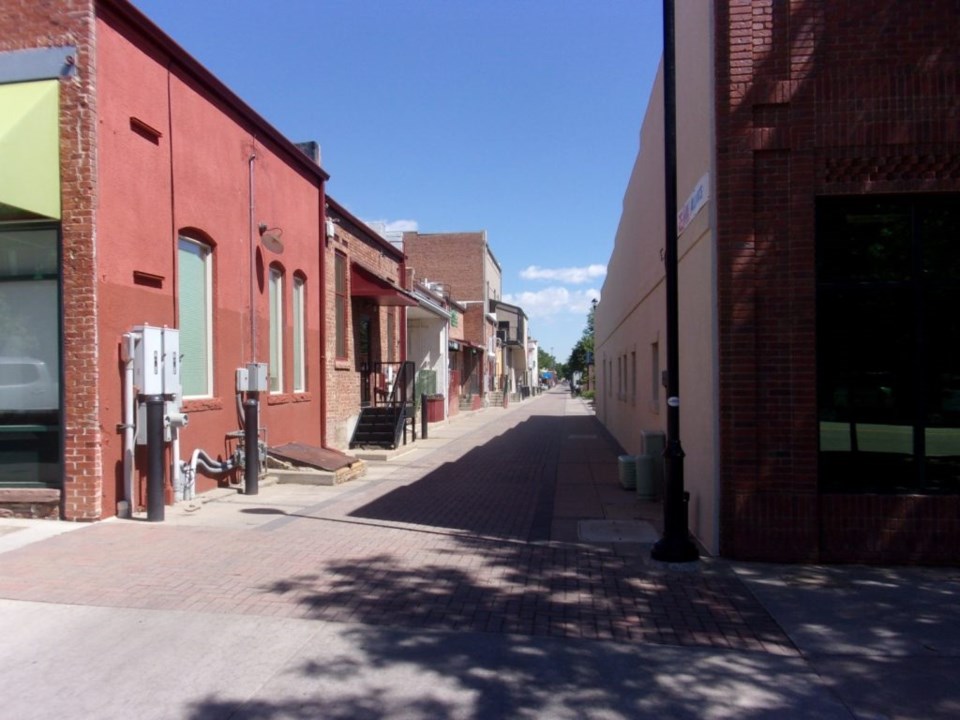
In a recent photo, we see that, while the buildings have changed at the corners of this alley on the north side of the 500 block of Fourth Avenue, the large building near the far end identifies the location as the same alley as in Boynton’s photo.
Boynton was born in Buffalo, New York, in 1853. He arrived in Colorado in 1877, farmed land east of Longmont adjacent to the Weld County line, and built a house that still stands near the corner of County Line Road and Route 119.
When Hayward died on December 26, 1897, Boynton took over as editor, at which post he remained until his own death on June 4, 1926. At that time, his elder daughter, Louise Boynton Clark, was the Ledger’s associate editor and assistant manager.
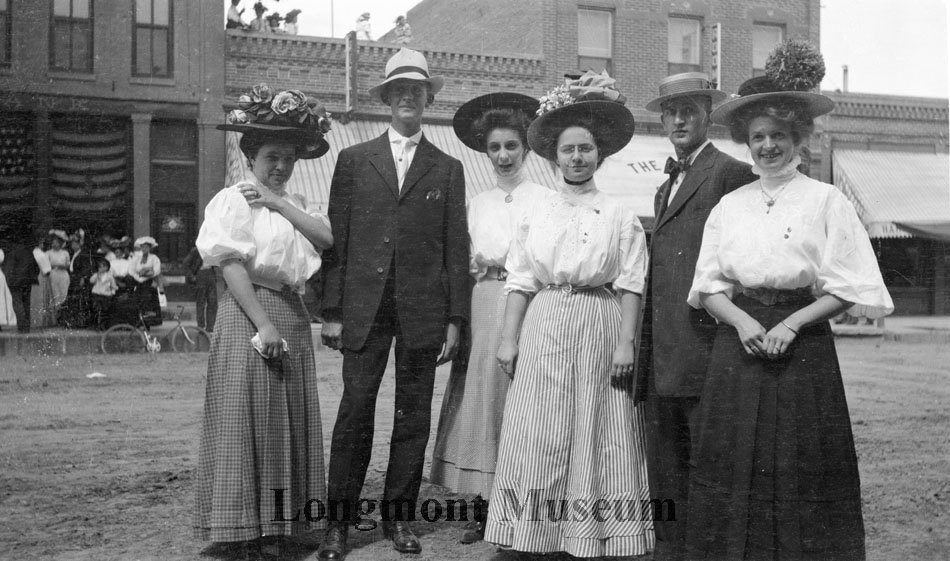
Boynton’s photo, “Pumpkin Pie Days,” (date range – 1908 to 1910) shows Louise, 4th from left, and her mother, Minnie, at far left. Louise’s expression may suggest a tinge of discomfort, perhaps from being so “gussied up.” Another of Boynton’s photos may yield a clue.
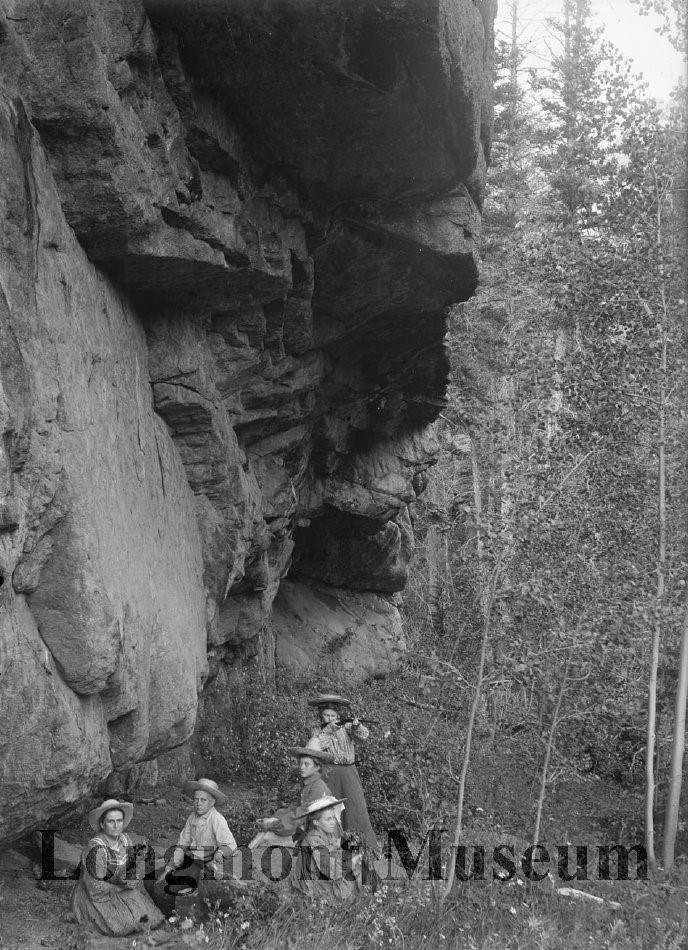
“Boynton family in the mountains” (date range 1900-1905) shows Louise aiming a rifle. Perhaps she felt more at home engaged in such pursuits than in behaving like a “proper young lady.”
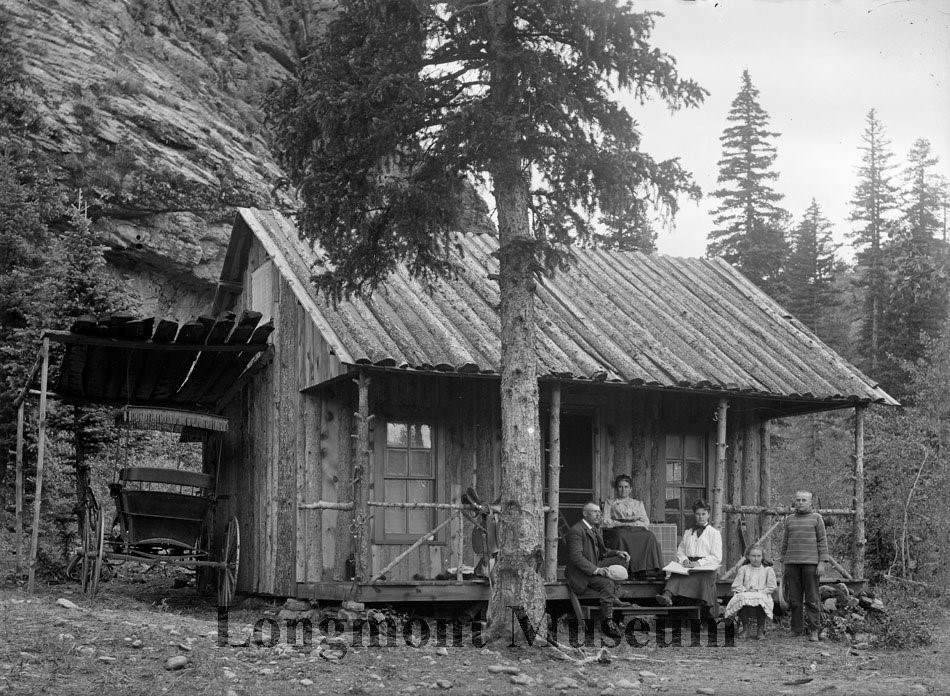
The Boyntons spent much of their leisure time at their cabin in Ferncliff on the outskirts of Allenspark, Colorado.
Seated left to right (date range 1900-1905) are Charles, Minnie, Louise, and Emily. Harry stands on the right. He died of a heart malformation in 1905 at age 15.
“With his Kodak over his shoulder,” Rev. Monroe Markley said at Boynton’s funeral, “he would penetrate the wilds of the Rockies in long hikes and return with wonderful pictures of nature. Many of his pictures were reproduced in the leading magazines of the country, and those who have been privileged to review the numberless photo albums in his library gained insight into the nature-loving life of our friend.”
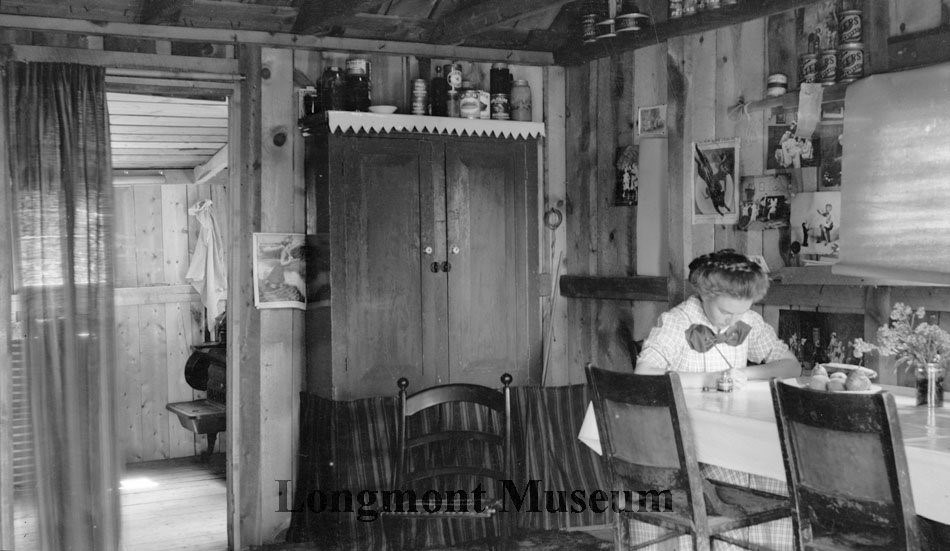
Another Boynton photo shows the younger daughter, Emily, and the cabin’s interior. She is writing with a dip pen, and a bottle of ink is on the table. All of Boynton’s progeny descend from her.
Louise married John Merritt Clark on June 16, 1913 at her home in Longmont. Clark died on August 14, 1916 in Nebraska. Louise never remarried. All of the Boynton collection was in her possession when she died in Longmont in 1955. Upon request at that time, Emily’s husband and widower, Walter Harvey Ziegler, donated it to Longmont. It consisted of 55 boxes containing almost 800 glass plates and two packages of film negatives. In 1973 Michel Kiteley made the prints that we have today.
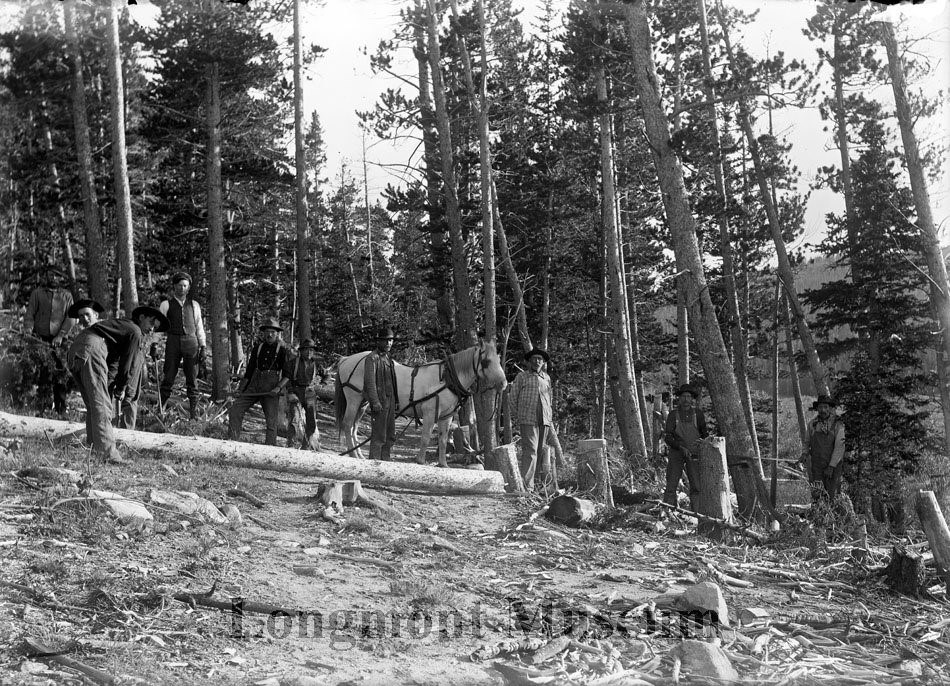
This photo bears the title: “10 men logging with horse.” Longmont native, Michel Kiteley, who helped preserve these photographs, believes this looks like a familiar location in Peaceful Valley.
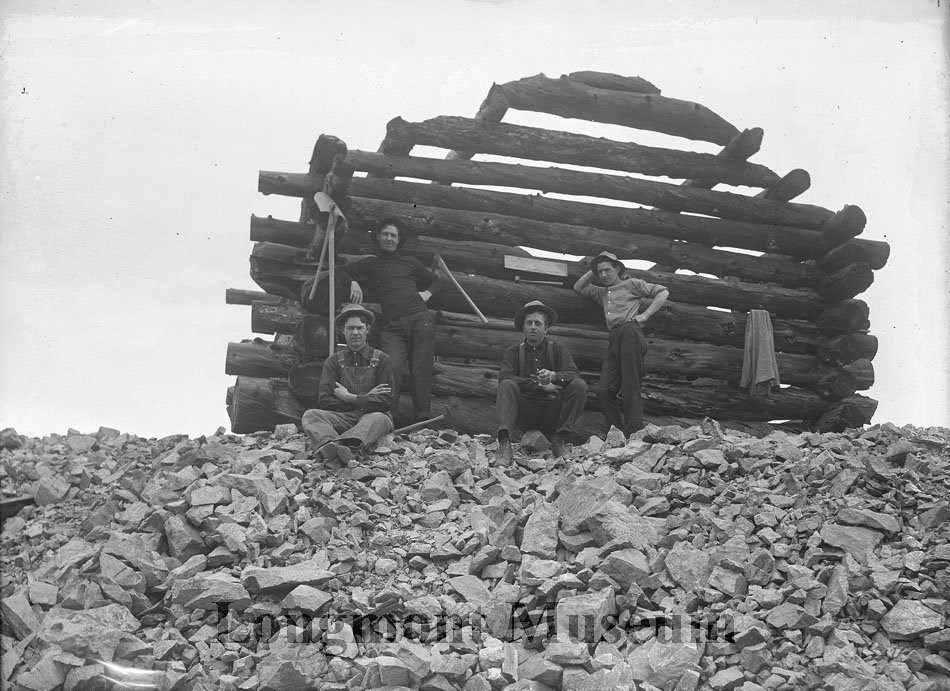
This Boynton photo, “4 men in front of Log Cabin Lode Mine,” says that it was part of the Allenspark Clarabelle Mining and Milling Operation. Mining in Allenspark did not last long, but it gained a tough reputation nevertheless with three saloons and frequent brawls.
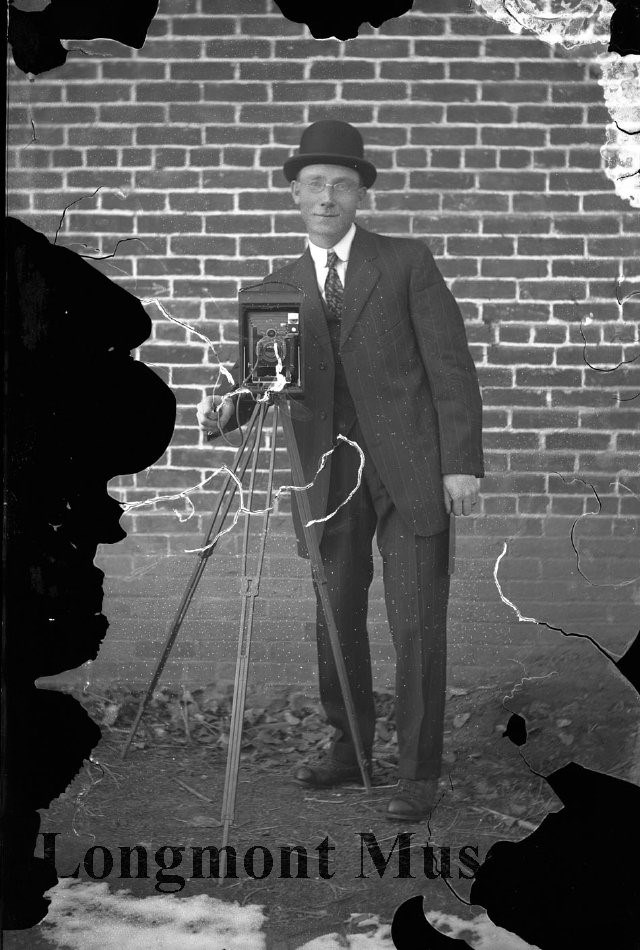
“Alfred Strand with a camera” is assigned a date range of 1890-1910 and comes with the note: “Alfred Strand was a cabinetmaker and amateur photographer in Longmont. His photos are in the Longmont Museum’s collection, accessions 1960.012, 1964.007, and 1964.019. This photo shows a connection between Longmont’s two great amateur photographers, Charles Boynton, who took the picture, and Alfred Strand.
Both photo collections can be viewed by contacting Erik Mason at Longmont Museum Archives or online at: http://longmont.pastperfectonline.com/.


